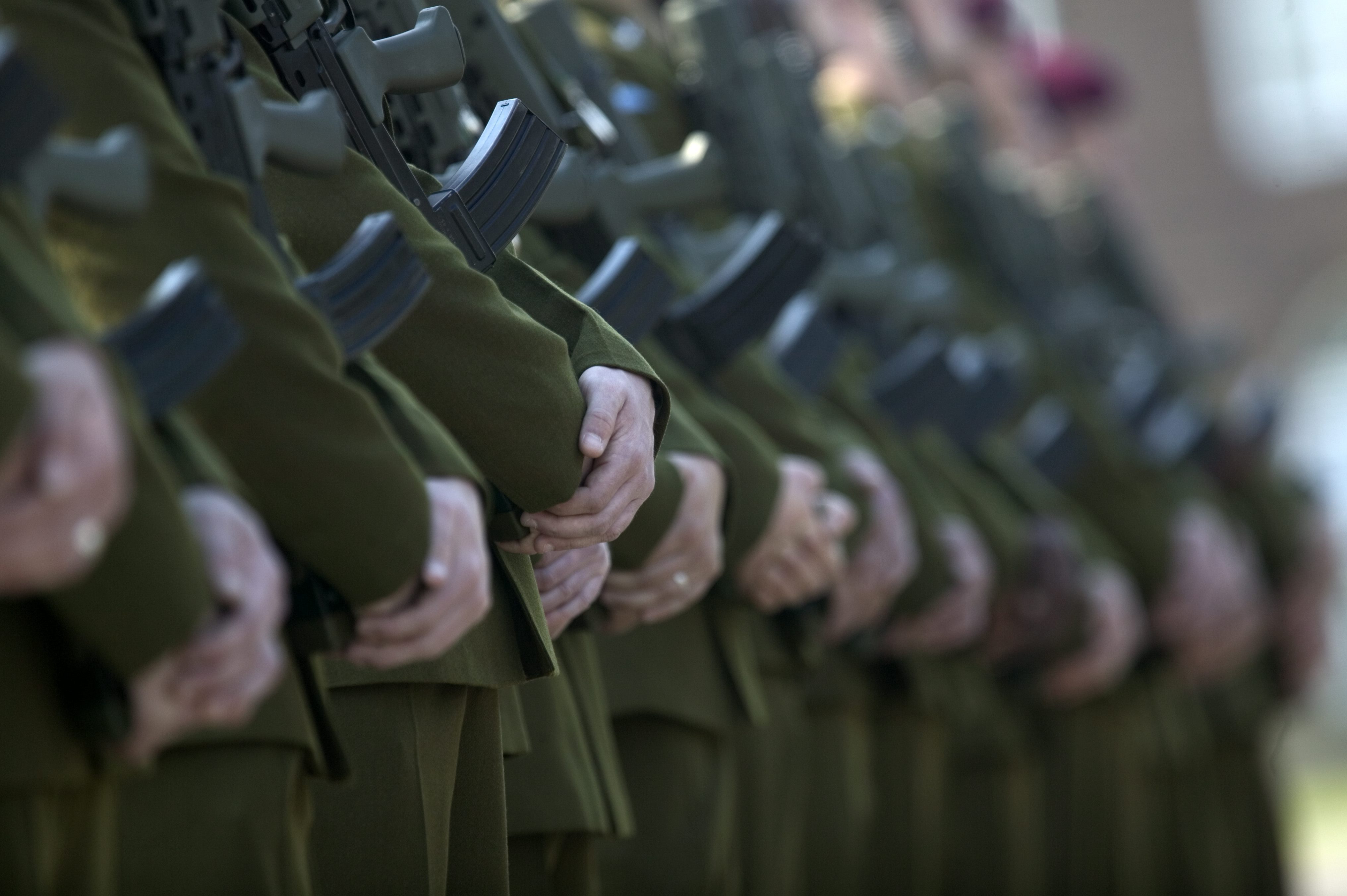
EU security and defence at home and abroad: from strategy to action
The EU Global Strategy (EUGS) has laid down the general political level of ambition for foreign affairs, security and defence. As a follow-up, the High Representative/Vice President announced that a Security and Defence Implementation Plan (SDIP) can be expected by the end of 2016. To make sure this Implementation Plan does not become a dead letter, a clear menu of deadlines, those responsible for delivery and follow-on mechanisms should accompany each task and proposal.
The core of the SDIP is agreeing on an actionable ‘Level of Ambition’. Following the EUGS text, this boils down to three core tasks for defence:
- Intervention in and stabilisation of external crises;
- Response to and protection of the EU (and its citizens) against threats;
- Capacity-building of regional partners.
One of the most important levels of ambition as set out in the EUGS is that, if need be, the EU must be able to fulfill these tasks autonomously. With that, the EUGS has set the bar high for the EU’s future capabilities, although simultaneously leaving it ambiguous. This question should be addressed as soon as possible so that work on incrementally achieving strategic autonomy can begin. The EU will prefer to work with partners, but if need be, it must be able to carry out defence and security tasks alone.
A Security and Defence Implementation Plan should be pragmatic but may not lack in ambition. This first of all means the EU should make better use of the tools and capabilities it already has, from Battlegroups to Treaty provisions, and start to make real operational contributions by filling understaffed Common Security and Defence Policy (CSDP) operations and responding to UN requests for bridging operations. At the same time, the current threat level signifies a redefinition of the tasks for CSDP as they are described in the EU Treaty.
Intervention and stabilisation
The tasks of intervention and stabilisation by the EU should be adjusted to modern requirements as well as to the ability to conduct them alone. The proliferation of arms, including heavy weapons, implies that EU member states’ armed forces should be capable to engage stronger opponents than in the past. European intervention or initial entry capabilities must be suitable to escalate to the high end of the spectrum in order to stop the fighting and force armed groups to turn in their weaponry. Unfortunately, European countries are still lacking adequate forces and, more particularly, key enablers such as intelligence, strategic reconnaissance (ISR), air-to-air refueling, precision munitions and medical evacuation.
Furthermore, special forces have to be expanded and full-scale training and exercises should also be conducted in a European context. Improved and adapted EU Battlegroups could be used either as an initial entry force at battalion-size task force level or as building blocks for a larger brigade-size intervention force. Proper strategic, operational and tactical planning and conduct capabilities are needed. All this can be built using already existing bodies – such as the Civilian Planning and Conduct Capability and the EU Operations Centre – and would not entail the construction of a new large EU institution from scratch.
European countries are still lacking adequate forces and key enablers
The long-term effort, based on the comprehensive approach of deploying all required civilian instruments in a coherent way with the military, will remain essential to move from ending the fighting to stabilisation and normalisation.
Protection of the EU against external threats
The comprehensive approach has been developed for crisis management; now, it has to apply as well to the protection of the EU borders. This is not territorial defence in the classical sense; that will remain NATO’s core business. However, for the EU there is certainly a complementary role to play, i.e. in areas such as hybrid threats, cyber security, vital civilian infrastructure, but also for CSDP in supporting resilience in EU member states and partner countries.
At its southern borders Europe is challenged by mass migration, terrorism and international crime. Here, the EU has to play the front role in protecting European interests and securing European borders. Recent times have shown that without military contributions the EU is not capable of handling the problems at its borders. So, this asks for a more structural and more fundamental approach, to be incorporated in the CSDP.

More than ever before, the CSDP has to be connected to the Area of Freedom, Security and Justice (AFSJ) and should assist in managing the security of Europe’s borders. For capability assets more priority should be given to smaller patrol vessels, surveillance equipment, border guards, border management capacity building (both for third countries and EU member states), maritime patrol aircraft, and search and rescue equipment. Connectivity between all relevant data exchange systems remains a key factor for more effective and timely responses to border security challenges.
Capacity-building on security and defence
Training and assisting regional organisations and nations in building their own capacities for security and crisis management is a priority. The current landscape of capacity-building is rather hazy as other organisations (such as NATO and the United Nations) and Western countries all run their own programmes without any coordination. Within the EU there is lack of proper synchronisation between programmes conducted under CSDP and those funded by the European Commission. So, what is needed here is to avoid duplication, overlap and waste of resources. In addition, common policies on ‘train & equip’, in particular among individual countries, should be developed. Rules about the ‘what and how’ of equipping third parties with military materiel should be agreed and applied by all.
Capabilities and commitment
The new range of tasks for CSDP should be included in the SDIP. The tasks could then be elaborated in illustrative scenarios to be used for defining capability requirements, planning and development, for which the Capability Development Plan (CDP) will be the basic document. A new Headline Goal exercise should be avoided. Central to designing capability requirements should be the effect that the EU wants to achieve for the tasks defined.
EU member states should move from ad hoc multinational projects towards a systematic and structural alignment of their defence planning
An important lesson learned is that smaller clusters of bilateral or regional defence cooperation work best for deepening defence cooperation. However, clusters have to be connected in order to ensure that their efforts to maintain and improve defence capabilities fit in the overall efforts to reduce European shortfalls. The EU and EDA can fill this gap, using the EU Global Strategy and the SDIP as the context for change.
Member states should move from ad hoc multinational projects towards a systematic and structural alignment of their defence planning. What is needed is a formal accountability system. Based on agreed criteria and benchmarks member states would be assessed on their performance annually. The High Representative/Vice President through EDA would act as the custodian of the data and assess member states’ performance through ‘European capability improvement reports’. These reports could be discussed during a dedicated EDA Ministerial Steering Board meeting.
Permanent structured cooperation (Pesco)
The above ambitious capability and cooperation agenda is unlikely to be realised by all EU member states together. More than fifteen years of CSDP have taught us that taking decisions based on unanimity results per definition in the lowest common denominator. Working with a core group by using the Pesco provisions of the Treaty could be the answer to break through the decade-long inertia on CSDP. The formation of a core group should be as inclusive as possible, but also set the bar for participation high enough to be able to achieve real progress in solving shortfalls and improving EU capabilities. Pesco would bring contractual certainty and could result in member states planning, procuring, pooling and investing together, thereby creating substantial synergies and economies of scale.
This essay is based on the article the authors contributed to the recent publication of the EU Institute for Security Studies, After the EU Global Strategy - Consulting the Experts. Security and Defence; which appeared on 28 October 2016; see: http://www.iss.europa.eu/publications/detail/article/after-the-global-strategy-consulting-the-experts-security-and-defence/








0 Comments
Add new comment